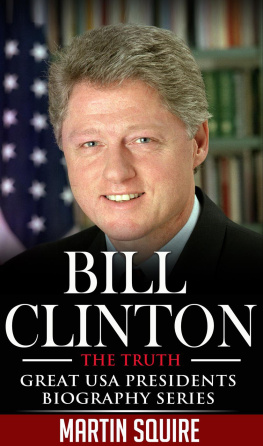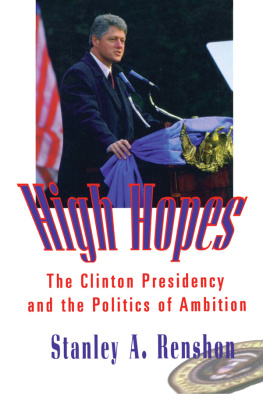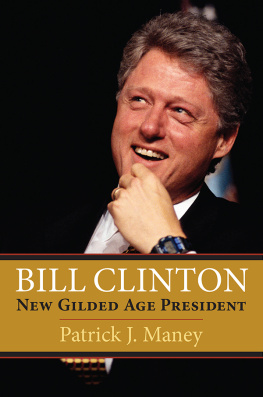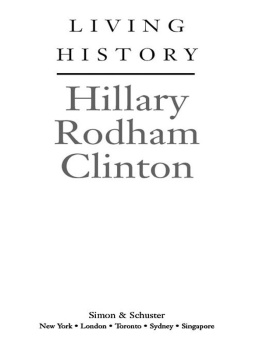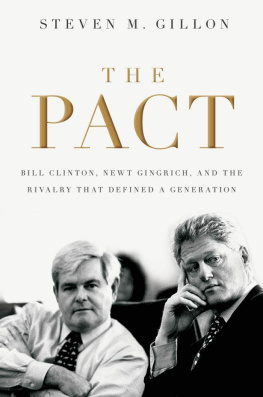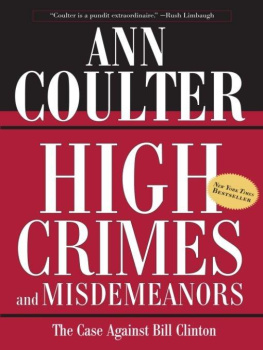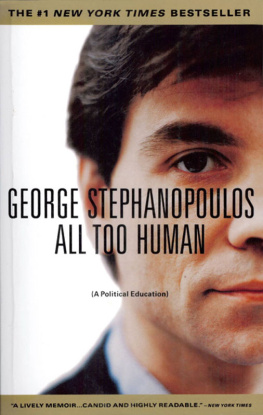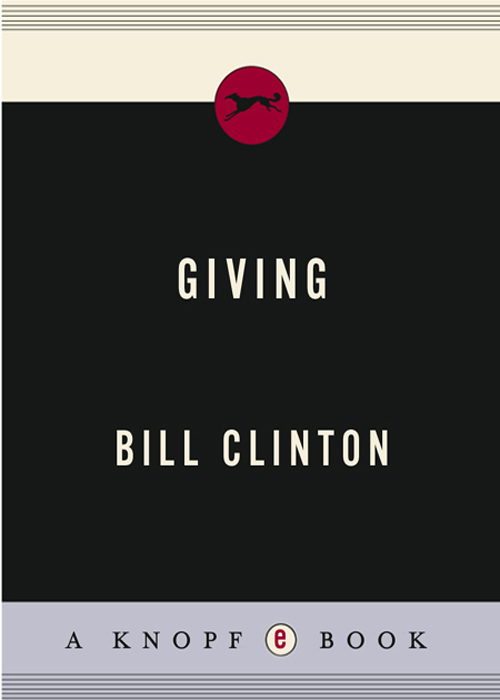
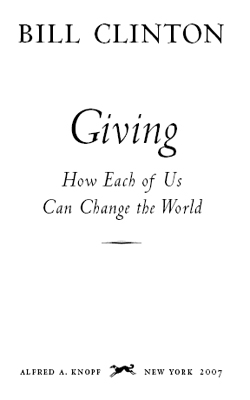
CONTENTS
To the dedicated staff, volunteers, partners, and financial supporters of the Clinton Foundation, Library, and School of Public Service, and to the memory of Ellen Verweij, a fine Dutch nurse who lost her life while serving in our HIV/AIDS initiative in Lesotho

INTRODUCTION
W HEN I LEFT the White House, I knew I wanted to spend the rest of my life giving my time, money, and skills to worthwhile endeavors where I could make a difference. I didnt know exactly what I would do, but I wanted to help save lives, solve important problems, and give more young people the chance to live their dreams. I felt obligated to do it because of the wonderful, improbable life Id been given by the American people and because politics, which consumed so much of my life, is a getting business. You have to get support, contributions, and votes, over and over again. If you serve well, its probably a fair trade, but no sensible person can do it as long as I did without thinking you still have to give more to balance the scales. Besides, I thought Id enjoy it. Like many people who are fortunate to live full, rewarding lives, I reached a point in my journey where, apart from taking care of my family and being with them and my friends, what I cared most about was doing what I could to make sure people younger than me dont die before their time and arent denied the chance to find their own fulfillment. After I narrowly escaped what could have been a fatal heart attack in 2004, I felt that way even more strongly.
This drive has led me into a wide variety of service projects, a number of which are chronicled in this book. It has also given me a far greater appreciation of the countless acts of giving I have witnessed all my life and sometimes have taken for granted. And it has convinced me that almost everyoneregardless of income, available time, age, and skillscan do something useful for others and, in the process, strengthen the fabric of our shared humanity.
Like most Americans of my generation, I first learned about giving in my church, where we were taught to tithe. Most kids my age also gave small amounts to the March of Dimes crusade against polio. After Billy Graham spoke to a racially integrated crusade in Little Rock when Central High School was closed in the fight over desegregation in 1958, I sent a small portion of my allowance to his ministry for a few months. In my teens, I did the usual volunteer work associated with school activities and helping the needy around Thanksgiving and Christmas.
When I was in my first year of college, I gave a little time to a community project Georgetown University ran in poor neighborhoods in Washington, D.C., and contributed to the occasional good cause, but I dedicated most of my free time to friends and campus activities. During my last two years of college, at Oxford, and at Yale Law School, I became obsessed with politics and gave very little time or money to anything else.
After I went home to Arkansas to teach law, I did some pro bono legal work and began to make small contributions to causes I was interested in. During the years I served as governor, I tried to set aside 10 percent of my income for giving: for my church, my alma maters, and worthy local projects like a shelter for abused women and children in our neighborhood. Because I was involved in politics from 1974 on, I didnt give much time to other things.
Hillary was a different story. When I met her in law school, she was involved with a local project to provide legal services to poor people. She took an extra year to study the special needs of children at the Yale Child Study Center and the university hospital. When she graduated, she decided not to pursue prestigious and more lucrative law firm opportunities and went to work for the Childrens Defense Fund to help poor children. When she came to Arkansas to be with me and taught in the law school, she ran the legal aid clinic and prison project. After we married and moved to Little Rock, while I was attorney general and governor, she co-founded the Arkansas Advocates for Children and Families; served on the board of our Childrens Hospital and helped with its fund-raising drive (it became one of the nations ten largest childrens hospitals in a state with only 2.8 million people); brought an excellent preschool program from Israel to poor families in our state; headed a task force that increased access to health care for people in small towns and rural areas; and chaired a committee that developed higher standards for our schools. She also served on an American Bar Association commission on the status of women in the profession. Somehow she made time for all these volunteer efforts while she was working full-time as a lawyer, active in her local church, and fully involved in all Chelseas school and extracurricular activities. My wife was my first role model for what it means to be a public servant without public office.
Hillary did the things she did because she wanted to make a difference. And she did them because it made her happy to see another baby in a small town get health care, another young child smiling at her preschool graduation ceremony, another student from a rural school become the first in his family to go to college, another woman break through the glass ceiling at a law firm.
Now that weve switched places and I do public service as a private citizen, its the human impact that I find most rewarding too. Ive included one picture in this book, opposite the title page, that says it all. It captures the beautiful face and bright eyes of a Cambodian orphan born with HIV. Basil was ten months old when this photo was taken. His mother died when he was only one month old, and her doctor arranged for him to be taken in by New Hope for Cambodian Children, an organization that cares for HIV-positive orphans and other vulnerable children. When Basil arrived at the home, he was six weeks of age and had both HIV and tuberculosis. His doctor, a Clinton Foundation fellow, treated him for both conditions, giving Basil lifesaving pediatric AIDS medication through my foundations partnership with UNITAID, which funds our efforts to treat children across the globe. Basil responded well to the treatment, gained weight, and, as you can see, is now healthy. He has a chance. Thats often all one person can give another. But it can make all the difference.
I wrote this book to encourage you to give whatever you can, because everyone can give something. And theres so much to be done, down the street and around the world. Its never too late or too early to start. In this book youll encounter givers old, young, and in between, rich, poor, and in between, highly educated, virtually illiterate, and in between. Youll read about innovative organizations, about new ways of giving time and money, and about old-fashioned acts of individual generosity and kindness. I think youll find people with whom you can identify, groups you might want to join, companies you might want to buy from, projects you might want to start on your own. It is impossible to mention all the individuals and organizations doing good work in America and around the world. There are millions of them. Naturally, many of those I mention in this book I happen to know personally, through the work of my foundation, but I hope the people and groups profiled are diverse and representative enough to persuade you that everyone can and should be a giver.
Next page


